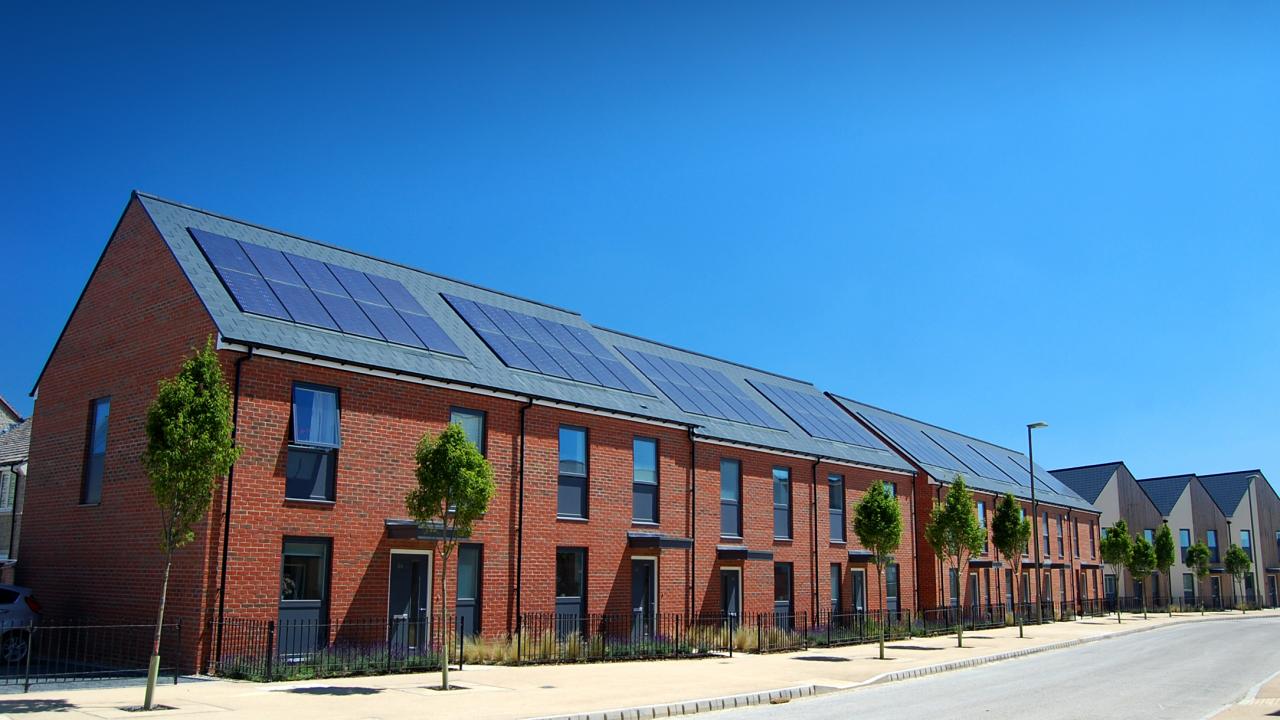

FUTURE PROOFING WITH STYLE
As policy makers task the construction industry with the delivery of low carbon and energy efficient houses to meet net zero targets, consumer demand for renewable technologies within attractive homes continues to rise. As a result, specifiers must continue to strike a balance when it comes to product selection that satisfies new legislation and exceeds purchaser expectations.
To achieve the perfect balance, Stuart Nicholson, Roof Systems Director at Marley, says specifiers should consider the deployment of a high performing, renewable technology package that includes solar panels, inverters, battery storage and EV charging technologies, combined with roof system security.
The amendments to Part L of the Building Regulations ahead of next year’s Future Home Standard introduction, has resulted in increased legislative scrutiny on the design, development and construction of energy efficient homes. And the sector is having to deliver this against a challenging economic backdrop of high interest rates and inflation, which are influencing consumer willingness to enter the housing market.
With a degree of in-built consumer reluctance, the specification market can play a pivotal role by being laser-focused on creating properties that combine the right level of sustainability investment to help future proof the home, and, at the same time, continue to design aesthetically appealing dwellings that continue to attract buyers.
The inclusion of sustainable technology solutions, such as heat pumps and better insulation, are among the practical ways specifiers are tackling the low carbon, energy efficiency challenge. But mindful of balancing budgets and the need to drive a good return on investment on the saleability of the new properties, careful consideration should also be given to all renewable product specification choices.
1.jpg)
Turning to solar
Efforts to combine attractive aesthetics with proven, affordable and accepted renewable technologies, means specifiers are increasingly being drawn to the benefits of an integrated solar PV roofing solution. While currently installed on around 10% of all new homes, the rate of solar specification is continuing to grow as a direct consequence of the new carbon reduction measures introduced over recent times.
Marley’s own research highlights that almost half of UK households (49%) have considered installing solar panels on their roof. With their primary motivation to reduce their energy bills, followed by a wish to generate their own power, and to decrease their carbon emissions.
Providing homebuyers with the means to access renewable and cheaper energy via solar is a growing consumer expectation, as they seek not only lower energy costs but also access to sustainable solutions as climate change concerns intensify.

The best of both worlds
But renewables specification choice does not have to come at the price of design credibility.
When renewable technology, such as solar PV, is installed as part of an integrated roof system, it creates a powerful amalgamation with outstanding kerbside appeal, proven environmental benefit and, ultimately, provides the best of both worlds for would-be purchasers.
Simply replacing a section of roof tiles affords the space for a solar PV array to become a fully connected and sleek part of the overall roof aesthetic. And there is also a specification cost benefit derived from purchasing fewer roof tiles per new build. This is particularly relevant as solar PV system costs have also reduced dramatically over the past decade.
Single source benefit – Marley’s comprehensive renewable energy package.
Marley is supporting the specification industry thanks to the development of a high performing renewable energy package that includes solar panels, inverters, battery storage and EV charging technologies – which can all be procured seamlessly from a single source.
Leading the way is Marley’s SolarTile®, a fully integrated and aesthetically pleasing solar panel solution, that is already a commonly specified solution and can deliver desired power outputs of between 1.5 and 2kw per household.
By replacing a section of roof tiles, integrated solutions such as SolarTile® provide a sleek aesthetic and function as a central component of the overall roof. This type of solar panel can also be installed at the same time as the rest of the roof tiles, without a specialist contractor.
And our renewable technology package is further enhanced with the recent launch of new solar inverter and battery storage solutions that fully complement SolarTile®.
The ES G2 hybrid inverter, alongside the Lynx Home U Series battery solution as an energy storage option, is a compact and highly efficient inverter designed to supplement rooftop solar PV systems. It allows end users to optimise and store energy from a sustainable source via the roof. The ES G2 Hybrid inverter provides an AC output range from 3.6 to 6.0 kWh, while the battery offers a 5.4 to 32.4kWh wide capacity range.
.jpg)
Ideal for residential applications, the battery and hybrid inverter combination can support homebuyers who are looking for properties that can reduce their reliance on the grid via renewable technologies.
Finally, to help meet the demands of electric vehicle adoption, Marley’s effective EV home charger – Clearline EV – satisfies Part S obligations for the provision of home charging facilities.
Clearline EV has attractive, slimline aesthetics to complement home exterior or interiors. It has guaranteed charging performance and the ability to connect solar panels on the roofscape with EV charging, so households can access renewable and cheaper energy in the home and to power up their electric vehicles for free. An easy-to-use app provides immediate control and a range of functions including charge scheduling, usage monitoring and solar power matching.
Peace of mind
With product specification longevity a key consideration, a Marley full roof system with solar PV offers the reassurance of a 15-year guarantee. This protection level delivered by the specification process can be a compelling sales message helping to actively promote the sustainability credentials of the property, alongside its kerbside appeal.

